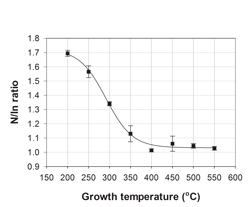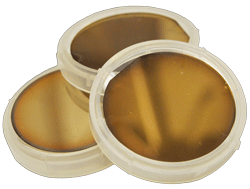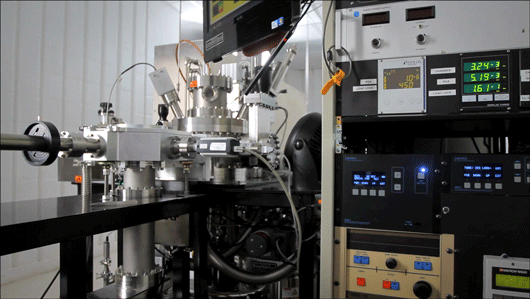- News
7 March 2012
Meaglow launches nitrogen-rich InN wafers
 Meaglow Ltd of Thunder Bay, Ontario, Canada – a privately held firm that produces a range of epitaxy equipment (migration-enhanced afterglow) and MBE and MOCVD accessories, as well as providing specialized thin films to research institutes and industry - has announced what it claims is a breakthrough in understanding indium nitride.
Meaglow Ltd of Thunder Bay, Ontario, Canada – a privately held firm that produces a range of epitaxy equipment (migration-enhanced afterglow) and MBE and MOCVD accessories, as well as providing specialized thin films to research institutes and industry - has announced what it claims is a breakthrough in understanding indium nitride.
When alloyed with gallium nitride (GaN), indium nitride (InN) forms the light-emitting component that powers the US$10bn LED industry. In its own right InN is being developed as an advanced material for solar cells, high-speed transistor devices and other applications. However, there are still many things that are not properly understood about InN.
For instance, based on theory it had long been assumed that it was impossible to produce nitrogen-rich InN, so it was a surprise a few years ago when samples made at low temperatures were measured with greater than 30% excess nitrogen present. Many researchers did not believe the measurements, says Meaglow, but they were subsequently repeated by many groups. Theory didn’t agree with experiment. How the excess nitrogen could occur remained largely unexplained until Meaglow’s chief scientist Dr K. Scott Butcher in January published an explanation (Applied Physics Letters 101 (2012) 011913).
 “Basically, the excess nitrogen is seen when forming the material at relatively low temperatures using plasma-based nitrogen sources. These plasma sources provide the extra potential energy needed for nitrogen-rich material to form,” says Butcher. “To a greater or lesser extent, excess nitrogen species are probably present in most InN samples, as plasma techniques are commonly used,” he adds. “It may take some years for the research community to come to terms with this, but nitrogen-rich InN is a reality, and now it's a reality we understand.”
“Basically, the excess nitrogen is seen when forming the material at relatively low temperatures using plasma-based nitrogen sources. These plasma sources provide the extra potential energy needed for nitrogen-rich material to form,” says Butcher. “To a greater or lesser extent, excess nitrogen species are probably present in most InN samples, as plasma techniques are commonly used,” he adds. “It may take some years for the research community to come to terms with this, but nitrogen-rich InN is a reality, and now it's a reality we understand.”
Nitrogen-rich InN may also be important from another perspective. InN is plagued by a surface current problem which is limiting its development. However, the excess nitrogen species, previously ignored, may hold the key to solving this problem. Butcher notes that these species are fairly mobile and migrate to sample surfaces. “They seem to fit the bill as a culprit for this phenomena.”

Meaglow says that it is now launching a range of nitrogen-rich InN wafers for sale exclusively on its website in order to further research and industry collaboration, so that all parties can obtain a stronger understanding of InN, and so that the material can realize its full potential.
